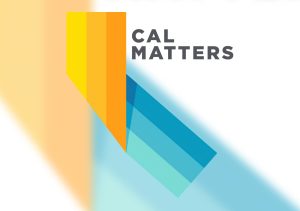Northside School Construction Bond Likely for Nov. Ballot
Now that Santa Clara Unified has secured the land for its new Agnews campus, the next order of business is finding the money to build it, figuring out the most auspicious time to place a facilities general obligation bond measure on the ballot, and specifying what that bond measure should be.
At the Feb. 13 meeting – which lasted practically into Valentine’s Day – the board heard a report from Gene Bregman & Associates on a survey a few weeks ago of 400 likely voters regarding a ballot measure for bonds to fund the new schools.
Before getting to the ballot measure question, Bregman noted that 43 percent of those surveyed thought that SCUSD was doing an excellent or good job. That was followed by 29 percent who had no opinion, 20 percent who thought it was doing a fair job, and 8 percent who thought it was doing a poor job. However, 62 percent of those with children in the district thought it was doing a good job.
For passing a bond measure, the good news was that 76 percent of those surveyed thought that the district’s schools were “great” or in “some” need of repair or rehabilitation. However, when respondents were asked about whether they would vote for a $459 million bond measure, the results were below the two-thirds needed to pass it.
When asked about the bond without any additional property tax assessment, 64 percent said they would vote for it – and that was the top support, regardless of how else the question was framed.
When the $459 million debt was combined with an additional property tax of $60 per $100,000 of assessed value, approval dropped to 57 percent. Making the question specific to new schools at Agnews garnered a 2 percent increase in support. Approval crawled up to 62 percent when the tax dropped to $40 per $100,000 of assessed value. Most supportive were those who participated on cell phones, were under 40, registered Democrats, and lived on Northside.
Bregman noted that the top reasons those surveyed gave for supporting a bond were first, building safety issues, and second, school overcrowding. The top reason given for opposing a bond measure was the number of school bond and parcel tax measures in recent years. Bregman’s data didn’t show much variation between a June or November ballot, and his recommendation was to look toward November because “This is going to take a lot of work.”
Some Question Poll’s Validity
However, several board members questioned Bregman’s results. Some thought a June vote would be better because it coincides with a highly contentious San Jose mayoral primary – the new schools would serve the part of the district that’s in San Jose. However, the same could be said about the congressional election in November, which will feature an intra-party fight between two Democrats, observed Trustee Ina Bendis. (This same question was discussed at length two weeks prior at the Jan. 29 meeting.)
However, no one appeared to know if there were enough likely voters in the San Jose part of the district to significantly change the outcome.
Trustee Christopher Stampolis thought that Bregman’s data was skewed because three quarters of the likely voters were also homeowners and self-identified as “white.” This, he inferred, underrepresented renters and minorities. “I think there is a four to six percent delta between what you’re saying and…the reality,” he said. “You’re talking to anyone who answers the phone.”
“You’re wrong,” answered Bregman. “We’re not just talking to anybody. We ask for a specific person.”
Bendis continued the point. “The people who are answering the phone…who are representative…of your demographic [white homeowners]….I do believe this does under-represent what we’re getting.”
“To say that the statistics are skewed…I would say absolutely not,” responded Bregman – who, after all, runs a polling company that was considered expert enough in its business to be hired by the district to conduct the poll.
“These are likely voters,” said Trustee Andrew Ratermann finally. “In terms of passing the bond, these are the people who actually vote. This is what they are saying.”
Trustees Bendis, Ratermann and Trustee Jim Canova wanted to see more specificity abut the Agnews campus in any future polling. “These are very general questions [on the survey],” said Ratermann. “I think we need to ask questions that are specific to this situation.”
“There’s an important linkage,” Canova said, “between buying the Agnews land and raising money to build a school on it….The [proposed] high school has a profoundly important impact on that area. It’s a massively important place to build a new high school.”
The district’s enrollment is expected to grow by 600 (4 percent) to 1,600 (10 percent) in the next five years, with most of the growth coming on the Northside, according to a Dec. 2013 report by the district’s demographic consultant, Tom Williams of the Arizona-based Williams Company. That number is likely to stabilize for the following five years because San Jose has nearly reached the limits of residential building permits planned for the area for the next 10 years.
$390 Million in Bond Sales Proposed
Lori Raineri President of Sacramento-based Government Financial Strategies provided nitty-gritty of actual bond issues – accompanied by a 31-page handout slides. This was a refinement of the plan she proposed to the board in January, prior to Bregman’s survey.
Raineri’s financial model was based on a $48 per $100,000 of assessed value tax to finance $390 million in bonds. What Raineri called “just in time financing” would involve four separate bond series spread out over the next six years.
Recognizing Reading Achievements
The board recognized three students at the Feb. 13 meeting: Todd Beadnell, Kai Howell, Aishwarya Krupashankar, and Stephanie Rojas for their hard work and significant improvements in reading. Asst. Superintendent Tanya Fisher noted each of the students’ hard work in developing their reading skills.
In one case, the student’s improvement was achieved through Pomeroy Elementary School’s Reading Recovery (RR) early intervention program – a program in which SCUSD is becoming an area expert.
RR is a whole language reading program – a multifaceted approach to teaching reading – and has opponents among those who favor phonics-intensive, “back-to-basics” pedagogy. (The problem with trying to teach English phonetically is that English doesn’t have a single letter-to-sound correspondence – illustrated, by coincidence, in the word “correspondence.” A phonetic spelling might be “kahrehspuhndens.”)
In a three-page 2011 email to former Superintendent Bobbie Plough, Bendis panned RR as “totally ineffective and highly expensive,” “new- age,” “constructivist,* Noyce-driven*, don’t-drill-and-kill, anti-phonics, whole language, feelings-before-facts, heterogeneous-grouping-with-differentiation pedagogic practices,” and a program “which has continuously failed us throughout [former Assistant Superintendent of Educational Services] Cesario’s tenure.”
Bendis’ K-12 education credentials, according to her website, are as a former substitute teacher at Wilcox High School and Head Start classroom aide.
*Constructivism is an educational philosophy that emphasizes experiential and integrated educational philosophy – sometimes called discovery-based. John Dewey and Maria Montessori were major proponents of this type of pedagogy. Common Core with its multifaceted approach to learning could be described as “constructivist.”
**The Noyce educational foundation, created by the family of Robert Noyce, inventor of the integrated circuit and the co-founder of Intel.











0 comments